Você importou uma frota de tuk-tuks elétricos anunciada para andar a 50 km/h, mas nas estradas da sua cidade eles mal chegam a 35 km/h. Agora seus motoristas estão reclamando e seu negócio parece lento.
A velocidade de um tuk-tuk elétrico é definida pela rotação do motor e pelo controlador, mas a velocidade máxima no mundo real é fortemente influenciada pela carga, pelo terreno e pelas leis locais. É um equilíbrio entre as configurações de fábrica e o ambiente operacional real.
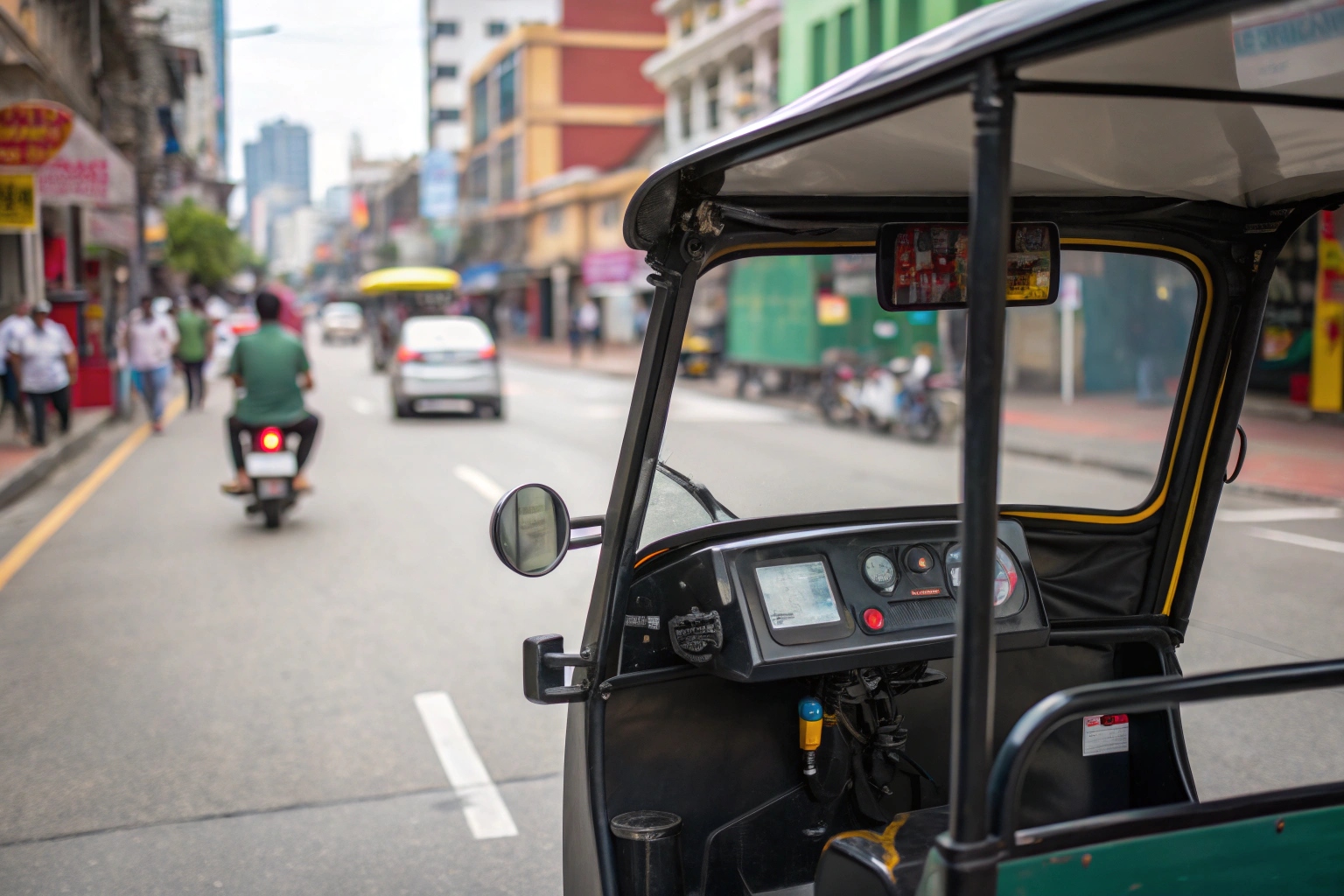
Como uma fábrica that exports globally, one of the first questions I always get is, "How fast can it go?" A resposta nunca é apenas um número. A velocidade que podemos incorporar ao veículo e a velocidade que você realmente obterá podem ser duas coisas diferentes. Um tuk-tuk projetado para carga pesada tem prioridades de velocidade diferentes de um projetado para transportar passageiros como táxi. Entender o que controla a velocidade ajuda você a solicitar o produto certo para o seu mercado e evitar decepções.
Quais fatores técnicos impactam diretamente a velocidade do Tuk-Tuk elétrico?
Você está olhando folhas de especificações de diferentes motores e controladores, mas não sabe qual combinação proporcionará a velocidade que sua empresa precisa. Essa confusão pode levar a um mau investimento.
Os três principais fatores técnicos são as RPM máximas do motor, o limite de velocidade programado do controlador e a relação de transmissão no eixo traseiro. A tensão do sistema (V) também desempenha um papel importante, pois uma tensão mais alta permite RPM mais altas do motor.
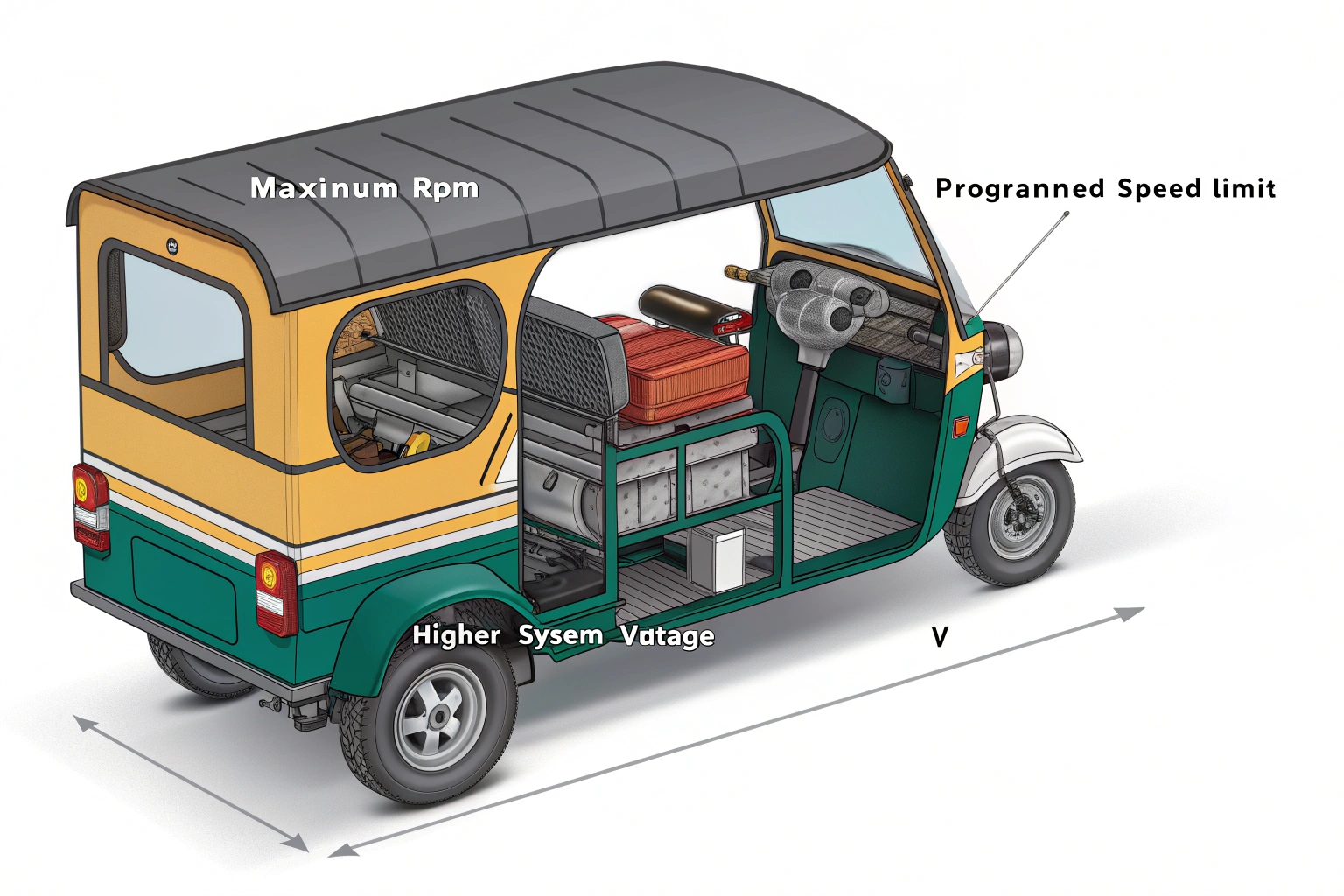
Da nossa fábrica, posso dizer que construímos a velocidade potencial de um veículo usando alguns componentes principais que devem funcionar juntos. É um sistema cuidadosamente equilibrado. Se uma parte for incompatível, você não obterá o desempenho esperado. Por exemplo, um motor de alta velocidade é inútil se o controlador tiver um limite de velocidade baixo programado nele. Veja como as principais peças técnicas controlam a velocidade.
| Fator Técnico | Como isso afeta a velocidade | Consideração de fábrica |
|---|---|---|
| Rotações do motor | Esta é a velocidade rotacional máxima do motor. Um motor com uma classificação de RPM mais alta tem potencial para uma velocidade máxima mais alta. | Fornecemos motores com classificações de RPM específicas projetadas para o trabalho do veículo – por exemplo, uma RPM mais alta para um táxi de passageiros. |
| Limite do controlador | Este é um regulador eletrônico configurado por nós na fábrica. Ele pode limitar a velocidade máxima por segurança ou para atender a regras legais. | Este é um pedido muito comum. Programamos o controlador com base nas necessidades do cliente e nas regulamentações do país importador. |
| Relação de engrenagem (eixo) | This translates the motor's rotation into the wheels' rotation. A "high-speed" A relação proporciona mais velocidade máxima, mas menos potência de tração (torque). | Esta é uma escolha crítica. Adequamos as relações à utilização principal: elevado binário para cargas pesadas, velocidade equilibrada para táxis. |
| Tensão do sistema | Um sistema de tensão mais alta, como 72V, permite que o motor gire mais rápido do que um sistema de tensão mais baixa, como 60V. | Atualizar para um sistema de 72 V é uma maneira comum de os clientes obterem mais velocidade, mas requer motor e bateria correspondentes. |
Como as condições da estrada e da carga afetam a velocidade do e-tuk no mundo real?
Seu novo tuk-tuk atinge sua velocidade máxima quando está vazio em uma estrada perfeita. Mas com passageiros e carga, tem dificuldade em acompanhar o ritmo, fazendo com que o seu negócio pareça pouco fiável e lento.
Cargas pesadas e subidas íngremes forçam o motor a usar mais potência apenas para se mover, o que reduz diretamente a velocidade máxima. A resistência ao vento e as estradas irregulares também criam arrasto, diminuindo ainda mais a velocidade do veículo em relação à velocidade nominal de fábrica.
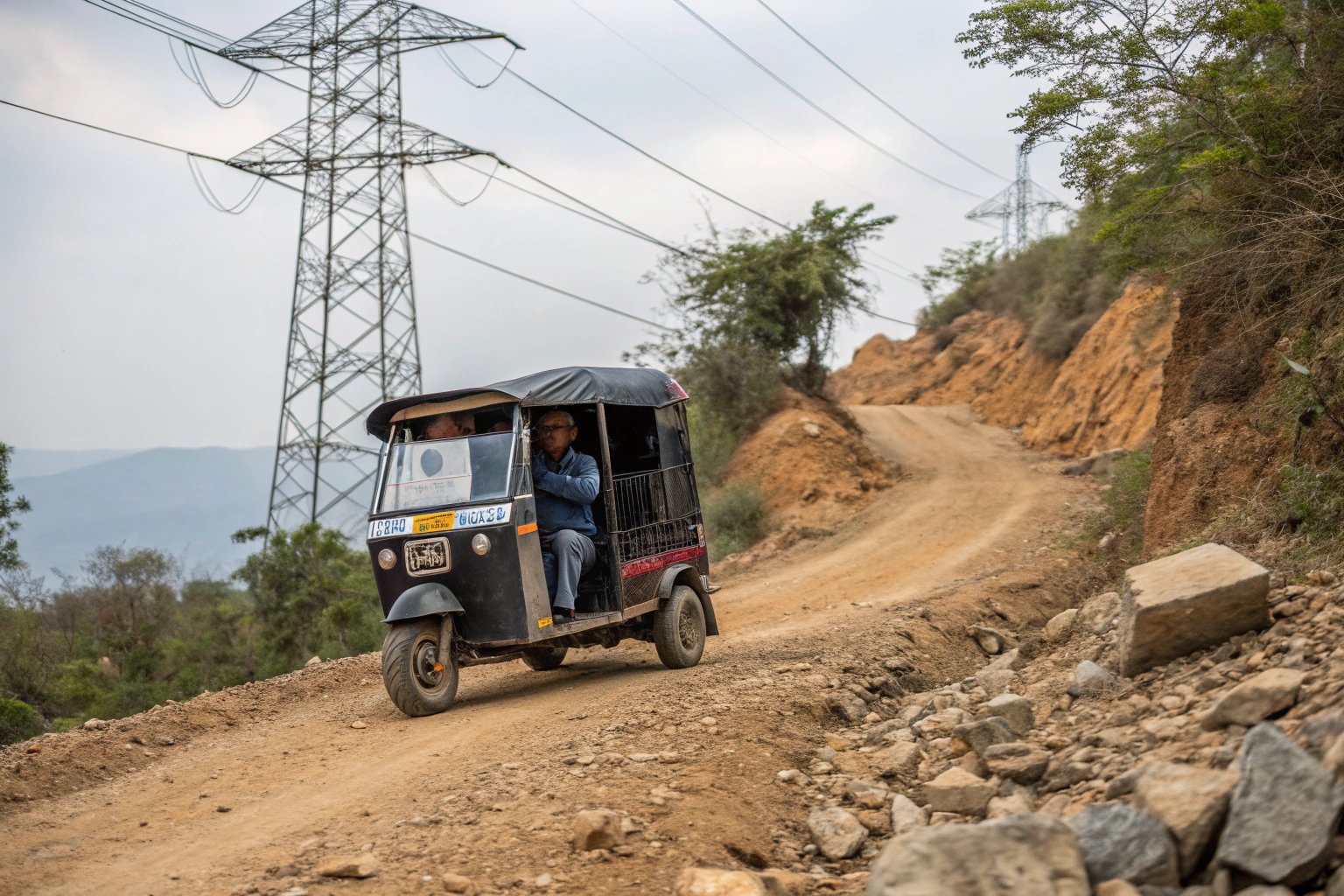
A velocidade máxima que testamos aqui na fábrica está em condições ideais: um único piloto em uma superfície plana e lisa. Mas o seu mundo não é uma pista de testes. Cada quilograma extra de peso e cada grau de inclinação lutam contra o motor. Sempre digo aos meus clientes para pensarem na sua realidade diária. Um veículo perfeitamente rápido nas ruas planas de Bangkok pode parecer muito lento nos subúrbios montanhosos de uma cidade no Peru. É fundamental compreender que a velocidade anunciada é um ponto de partida e não uma garantia em todas as condições. Aqui estão os maiores fatores que irão atrasá-lo no mundo real.
| Fator do mundo real | Impacto na velocidade | Meu conselho aos compradores |
|---|---|---|
| Carga do Veículo | Diminuição significativa. Cada passageiro ou caixa de carga requer mais energia apenas para se movimentar, deixando menos energia disponível para velocidade máxima. | Sempre pense na sua carga média. Um tuk-tuk para seis pessoas será mais lento do que um tuk-tuk para três com o mesmo motor. |
| Inclinação da estrada | Grande diminuição. Subir colinas força o motor a concentrar toda a sua energia no torque (potência de tração), o que reduz drasticamente a velocidade do veículo. | Se suas rotas diárias incluem colinas, você deve priorizar um motor de alto torque e uma marcha em vez de uma classificação de alta velocidade máxima. |
| Resistência ao Vento | Diminuição moderada. Isto se torna mais perceptível em velocidades mais altas, especialmente para tuk-tuks com cabines grandes e fechadas ou tetos de lona. | Este é um fator para modelos de táxi. Um triciclo de carga aberto terá menos resistência ao vento do que um modelo de passageiro totalmente fechado. |
| Superfície da estrada | Pequena diminuição. Dirigir em estradas de terra, cascalho ou mal conservadas cria mais atrito do que asfalto liso, o que retarda o veículo. | Embora você não possa repavimentar as estradas, esteja ciente de que terrenos acidentados reduzirão naturalmente a velocidade máxima do seu veículo. |
Por que os hábitos e regulamentos de direção limitam a velocidade do Tuk-Tuk elétrico?
Você quer o tuk-tuk mais rápido possível, mas está preocupado com a segurança e as leis locais. Forçar a velocidade máxima pode tornar seus veículos perigosos ou ilegais em seu mercado.
A condução agressiva esgota a bateria mais rapidamente e pode ser insegura, enquanto as regulamentações de trânsito locais impõem frequentemente limites de velocidade rigorosos aos veículos de três rodas. A velocidade máxima legal muitas vezes torna-se a verdadeira velocidade máxima do veículo, independentemente da sua capacidade técnica.
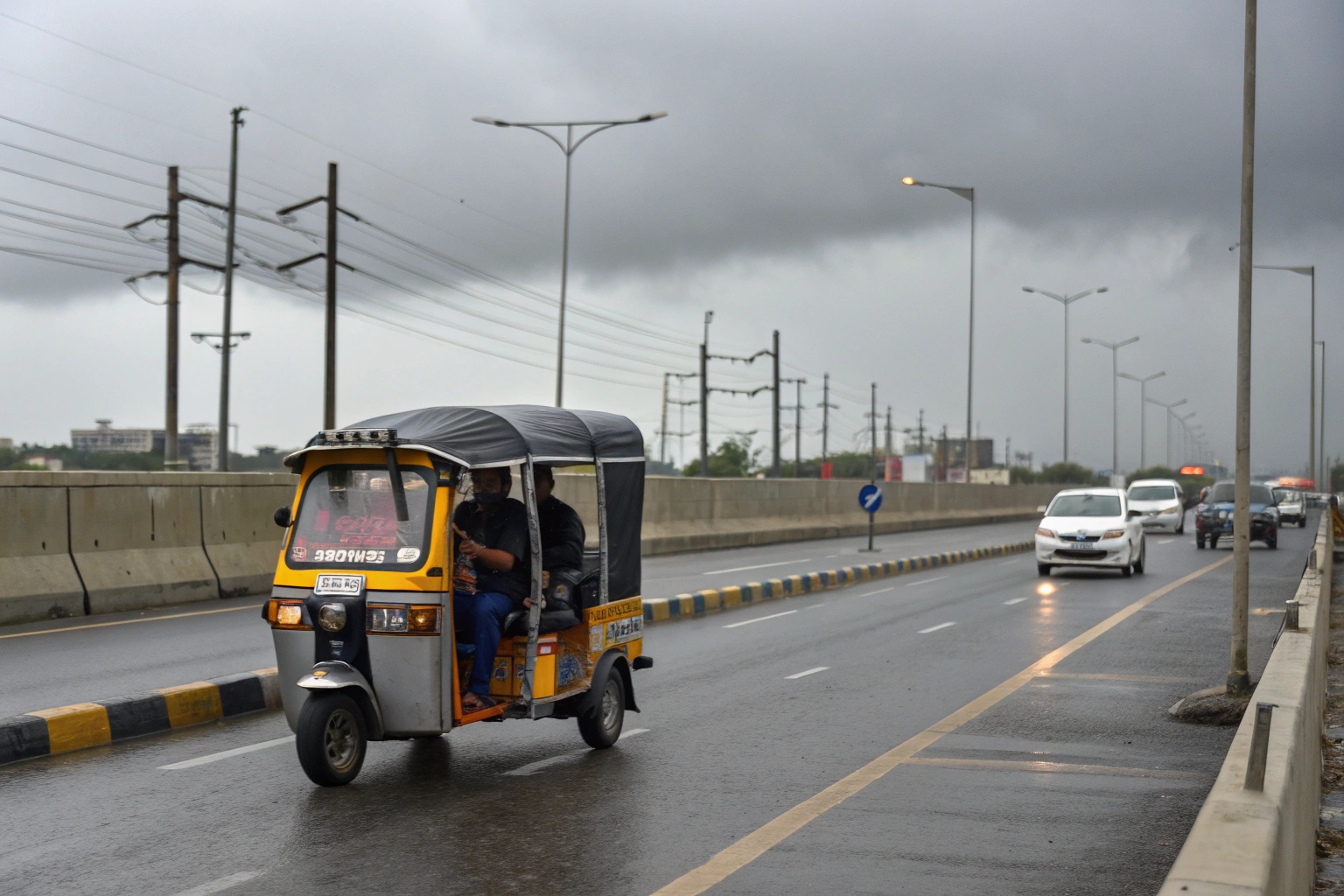
Mesmo que você tenha o motor perfeito e as condições de estrada ideais, há dois fatores finais que impõem um limite rígido à velocidade: o motorista e a lei. Um motorista que acelera constantemente pode parecer rápido, mas também está descarregando a bateria muito mais rapidamente, o que pode reduzir o desempenho geral e o alcance. No entanto, o fator mais importante é a legislação local. Exportamos para vários países e cada um tem regras diferentes. Por exemplo, algumas cidades nas Filipinas ou na Índia têm limites de velocidade específicos para triciclos comerciais, muitas vezes em torno de 40-50 km/h. Como importador, você deve conhecer essas regras. Não adianta pedir um tuk-tuk de 60 km/h se o limite legal é de 40 km/h. Frequentemente programamos os controladores para atender às leis locais de nossos clientes para garantir que os veículos estejam seguros e em conformidade desde o contêiner.
O que os compradores B2B devem considerar ao avaliar a velocidade do Tuk-Tuk?
Você precisa decidir a velocidade certa para sua frota. Escolher uma velocidade muito lenta frustrará os motoristas, enquanto muito rápida pode ser insegura e ineficiente para a finalidade do veículo.
Avalie a velocidade com base no trabalho do tuk-tuk. Os triciclos de passageiros precisam de uma velocidade segura e moderada (25-35 km/h). Os modelos de carga exigem velocidade limitada (abaixo de 40 km/h) para frenagem com cargas pesadas. Os táxis podem ser mais rápidos (até 55 km/h) para maior eficiência comercial.
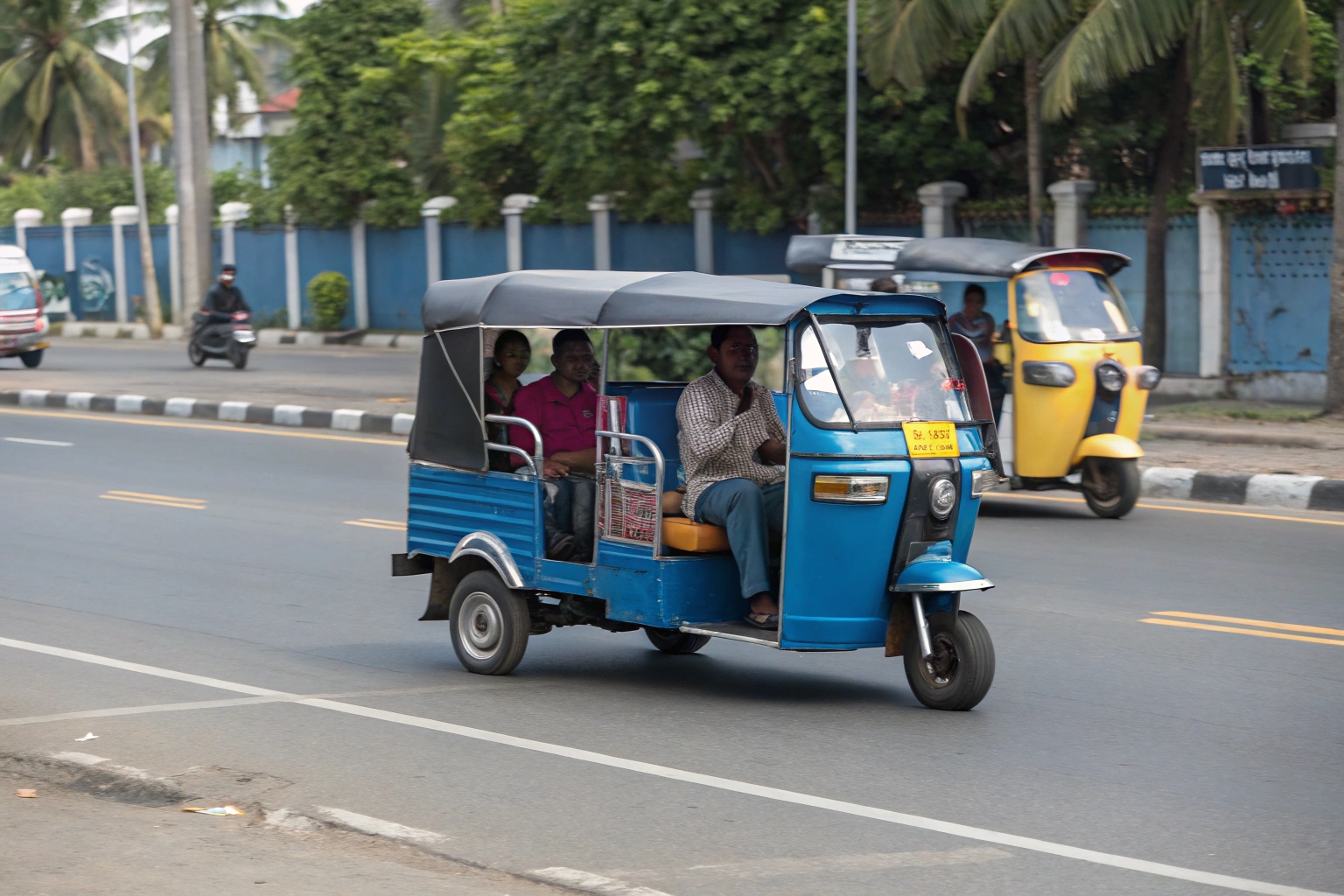
The final decision should not be about getting the "fastest" tuk-tuk. Deveria ser sobre conseguir o certo velocidade para o seu modelo de negócios. As necessidades de um operador de carga são completamente diferentes de um serviço de táxi urbano. Pela minha experiência de trabalho com centenas de compradores B2B, os mais bem-sucedidos adaptam a velocidade do veículo ao seu trabalho diário. Um motor e uma bateria mais rápidos custam mais, portanto, pagar por uma velocidade que você não precisa ou não pode usar com segurança é um desperdício de dinheiro. Aqui está um guia simples que uso para ajudar meus clientes a fazer a escolha certa.
| Modelo de negócios | Preocupação Primária | Velocidade máxima recomendada | Por que essa velocidade? |
|---|---|---|---|
| Triciclo de passageiros | Segurança dos passageiros | 25 - 35 km/h | Nessas velocidades, o veículo fica estável, fácil de controlar nas vizinhanças e seguro para seus ocupantes. É um passeio confortável, não uma corrida. |
| Carga Tuk-Tuk | Eficácia da frenagem | 40-45km/h | Quando você tem 500kg de carga, parar com segurança é mais importante do que ir rápido. Uma velocidade mais elevada tornaria a distância de travagem perigosamente longa. |
| Táxi Tuk-Tuk | Eficiência comercial | 50 - 55 km/h | Essa velocidade é rápida o suficiente para ser eficiente no transporte urbano e na realização de mais viagens por dia, mas ainda dentro de uma faixa segura para o tráfego urbano. |
Conclusão
Escolher a velocidade certa do tuk-tuk é combinar a capacidade do veículo com sua finalidade. Equilibre as especificações técnicas com as condições e segurança do mundo real para garantir que sua frota seja eficiente, lucrativa e segura.

